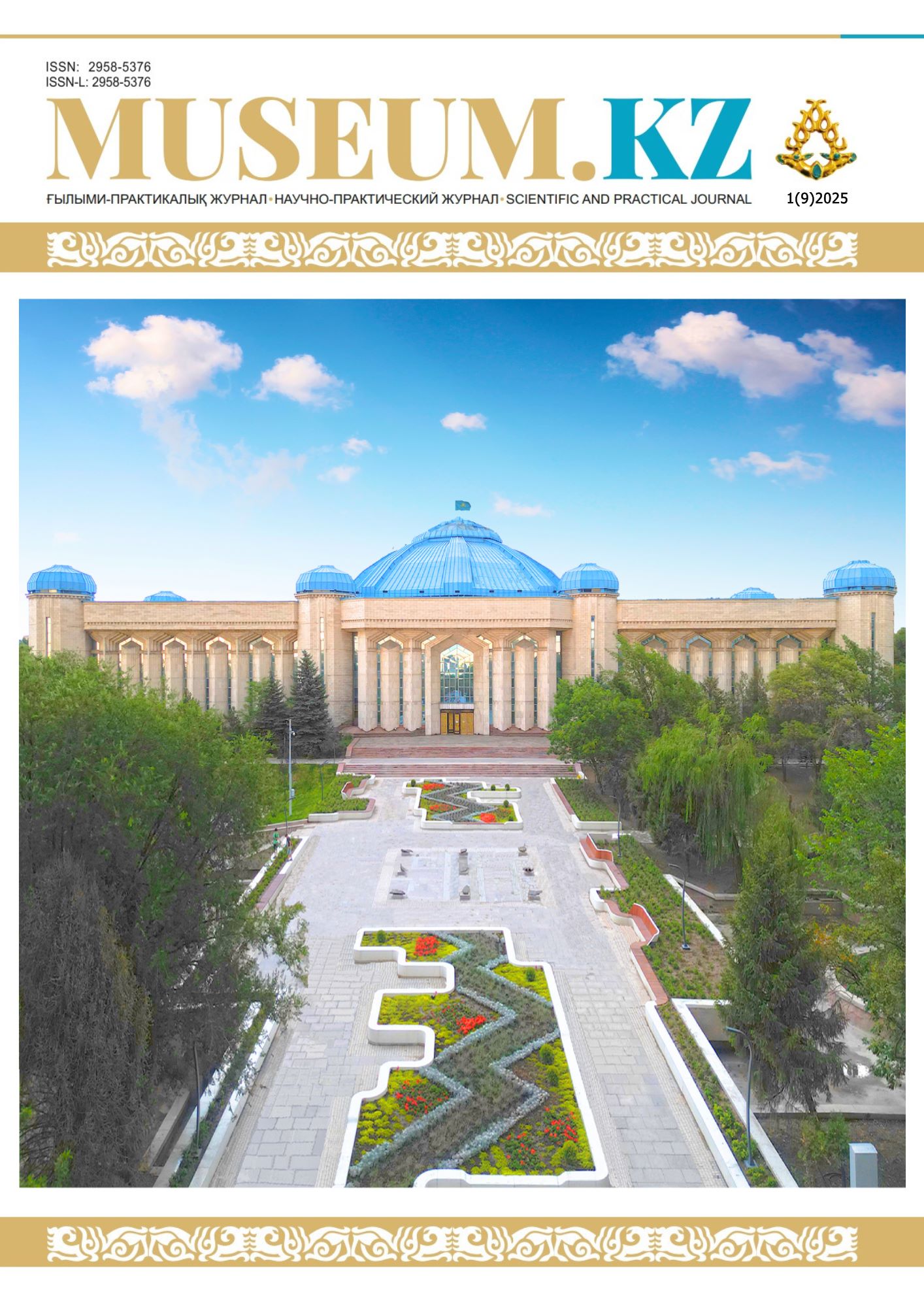SHENGELD SILKS: FRAGMENTS OF A LOST TEXT
DOI:
https://doi.org/10.59103/muzkz.2025.09.01Keywords:
archaeological textiles, Chagatai ulus, Mongol Empire, nomads, panni tartarici, embroidery, silk, collection, costume, ShengeldyAbstract
Until recently, textile finds from the Chagatai Ulus remained largely unknown to specialists in archaeological textiles. This article presents the results of a study of silk fabrics from the collection of the Central State Museum of the Republic of Kazakhstan (CSM RK), dated to the late 13th – early 14th century, featuring woven patterns and polychrome embroidery, and defines their place and significance within the context of historical sources.
The fabrics were discovered in the burial of a noble nomad located near the village of Shengeldy in Almaty Region in 1982. Based on technological, morphological, and semantic analyses, as well as historical parallels, the study revealed the characteristics of the production of various types of silk fabrics, аrtistic features of embroidery, organization of decorative designs, and the places of production of Shengeldy silks. These findings represent a significant resource for the study of weaving traditions of the 13th-14th centuries, as well as the international connections of the Mongol era and the use of panni tartarici in the religious practices of medieval Europe. They open new horizons for understanding cultural exchanges and influences, which makes them an important subject for scholarly analysis.
A comparative analysis of the fabrics and visual sources demonstrated that the compositions embroidered on Shengeldy silks bear similarities to artistic motifs characteristic of the Central Asian homeland of the Mongols and fit organically into the context of the art of the Mongol Empire. All textile fragments from the Shengeldy burial are remnants of the clothing of the buried individual. The studied fragments of silk clothing, in conjunction with visual sources, provide insight into the variety of forms, decoration, and styles of dress among the Mongolian elite, allowing for the reconstruction of the attire of a Chagatai warrior using analogies.







